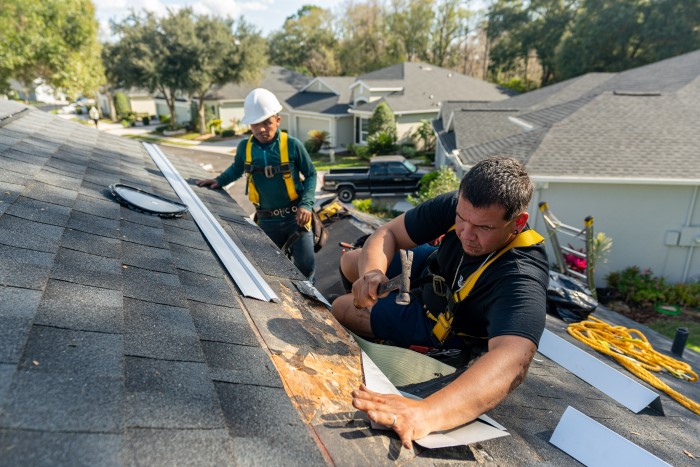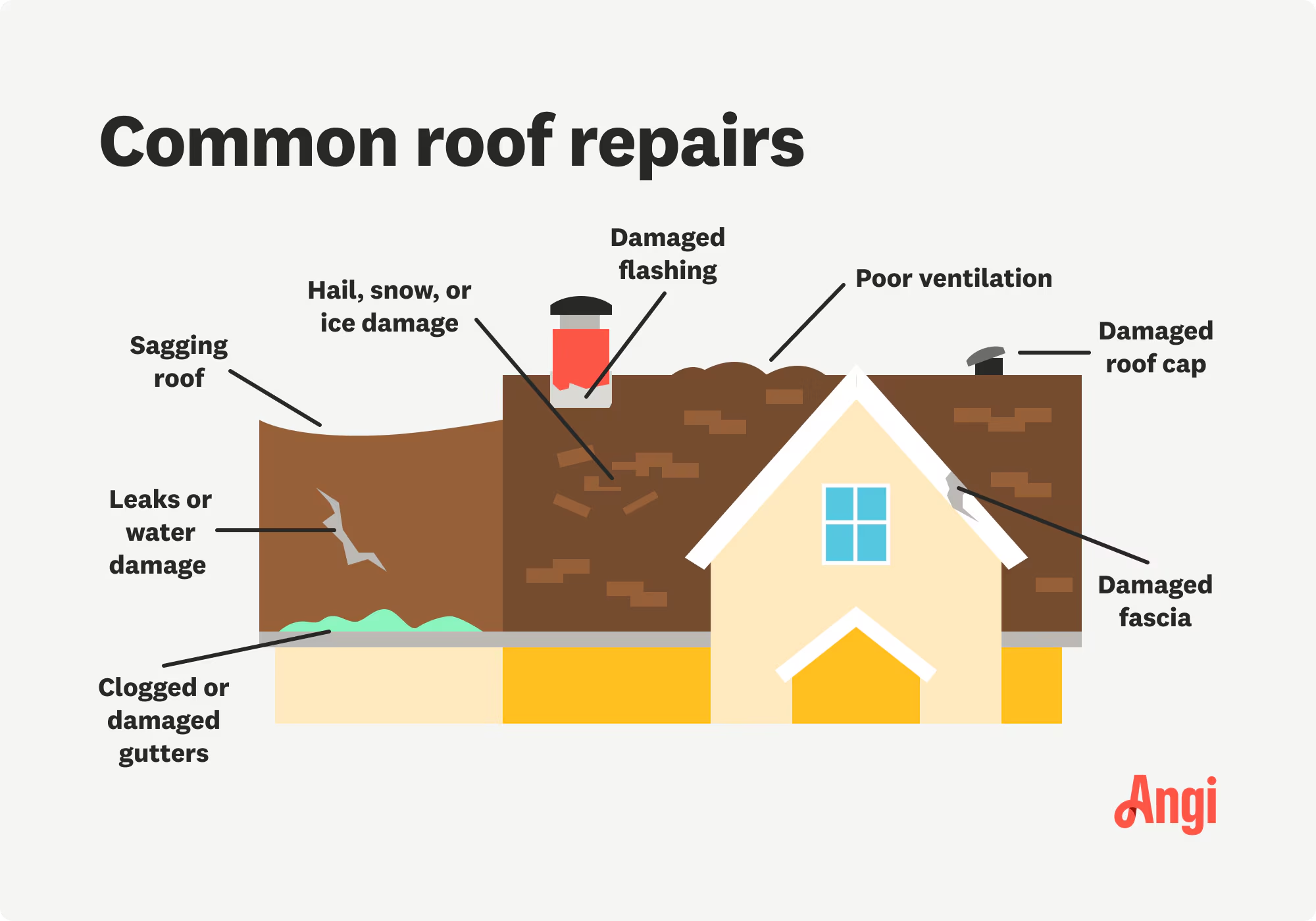Understanding the Different Kinds Of Roofs: A Comprehensive Guide for Homeowners
In the realm of homeownership, selecting the suitable roof style is a decision that carries significant ramifications for both performance and visual charm. With a selection of alternatives-- varying from the standard gable to the modern level-- each kind offers special advantages and challenges that need to straighten with the homeowner's ecological factors to consider and particular requirements. Recognizing these differences not only aids in making an enlightened choice but additionally influences lasting maintenance and power effectiveness. As we explore the complexities of different roof types, it becomes evident that size does not fit all; the appropriate option might shock you.
Gable Roofing Systems
Gable roofings, characterized by their triangular form, are amongst one of the most prominent roof covering designs due to their simpleness and performance in dropping water and snow. This layout features 2 sloping sides that fulfill at a ridge, permitting effective water drainage and lessening the risk of water buildup. The steep pitch commonly connected with gable roofs improves their capacity to deal with hefty precipitation, making them appropriate for different environments.
Along with their sensible benefits, gable roofing systems supply visual flexibility. They can be adjusted to various architectural designs, from standard to modern homes. The style can additionally suit additional attributes such as dormer windows, which improve all-natural light and air flow in the attic room room.
Furthermore, saddleback roofs provide sufficient area for insulation, adding to energy effectiveness. Homeowners can pick from a variety of roofing products, including asphalt shingles, metal, and tiles, even more improving personalization choices.
In spite of their advantages, gable roofings may require extra support in areas prone to high winds or heavy snowfall. Generally, the saddleback roof continues to be a popular selection as a result of its blend of performance, durability, and visual appeal.
Apartment Roofs
Level roofing systems are typically acknowledged for their minimalist design and sensible applications, especially in commercial and industrial setups (oahu roofing). These roofs include a straight or almost horizontal surface area, which enables easy building and versatile room use. While they may do not have the visual charm of pitched roofing systems, level roofings provide various benefits, particularly in urban settings where optimizing room is critical
One of the key benefits of level roofs is their accessibility. Property owners can use the roofing system area for numerous objectives, such as rooftop yards, terraces, or photovoltaic panel setups. In addition, level roof coverings are typically extra affordable to maintain and set up compared to their sloped counterparts, as they call for fewer materials and labor.
Common materials made use of for level roof coverings include built-up roof (BUR), customized bitumen, and single-ply membranes, each offering unique benefits. On the whole, flat roofing systems serve as a adaptable and useful selection for many homeowners and businesses alike.
Hip Roofs
Hip roofing systems are identified by their sloped sides that assemble on top, developing a ridge. This layout stands out from gable roofings, as all 4 sides of a hip roof covering incline downwards towards the wall surfaces, supplying a much more stable structure. The angle of the inclines can vary, enabling flexibility in architectural aesthetic appeals and capability.
Among the primary benefits of hip roof coverings is their capability to hold up against hefty winds and negative climate condition. The sloped surface areas make it possible for far better water drain, decreasing the threat of leakages and water damage. Additionally, hip roofs supply boosted attic room space, which can be used for storage or even transformed into livable locations.
Nonetheless, building a hip roof can be extra complicated and expensive than easier roof kinds, such as saddleback roofs. The extra material and labor associated with creating the slopes and ensuring appropriate structural integrity can cause greater expenses. Regardless of these downsides, like it numerous house owners prefer hip roofs for their longevity, aesthetic allure, and capacity for power efficiency.
Mansard Roofing Systems
Mansard roof coverings, frequently identified by their distinct four-sided style, attribute two inclines on each side, with the lower slope being steeper than the top. This building design, originating from France in the 17th century, is not just aesthetically attractive however useful, as it maximizes the useful space in the top floors of a structure. The steep reduced slope permits for even more headroom, making it an excellent option for attic rooms or loft spaces, which can be transformed into living rooms.
Mansard roof site web coverings are characterized by their flexibility, fitting various architectural styles, from standard to contemporary. They can be created with various materials, including asphalt tiles, slate, or metal, offering house owners with a series of alternatives to match their spending plans and choices. Furthermore, the style permits the combination of dormer windows, enhancing all-natural light and air flow in the top degrees.
Nevertheless, it is necessary to think about the prospective drawbacks. Mansard roofings might need more maintenance due to the intricacy of their layout, and their steep slopes can be challenging for snow and rain runoff. Overall, mansard roof coverings incorporate beauty with usefulness, making them a popular selection among property owners looking for distinct building functions.
Shed Roof Coverings
As house owners progressively look for simpleness and capability in their architectural layouts, dropped roofs have actually arised as a popular selection. Defined by a single sloping plane, a shed roof covering provides a minimal aesthetic that complements numerous home designs, from contemporary to rustic.
One of the primary benefits of a shed roof is its simple construction, which commonly translates to decrease labor and material prices. This layout enables effective water drain, decreasing the threat of leaks and water damage. Furthermore, the upright slope supplies enough space for skylights, improving all-natural light within the inside.
Shed roof coverings also provide adaptability in regards to use. They can be successfully integrated into additions, garages, or outside structures like sheds and structures. In addition, this roof style can fit different roof products, consisting of steel, asphalt tiles, or perhaps environment-friendly roofings, aligning with green initiatives.
However, it is necessary to think about local climate conditions, as heavy snow loads might necessitate adjustments to the roof's angle or framework. On the whole, lost roofings offer a functional and visually pleasing choice for property owners seeking to this page optimize capability without jeopardizing style.
Conclusion


Gable roof coverings, defined by their triangular shape, are amongst the most prominent roofing styles due to their simplicity and effectiveness in shedding water and snow. oahu roofing. The steep pitch generally associated with gable roofings boosts their capability to manage hefty precipitation, making them suitable for various climates
While they might lack the aesthetic charm of pitched roof coverings, flat roofs supply numerous advantages, particularly in city environments where making best use of area is vital.

Comments on “Roof Repair Oahu: Expert Roof Repair Works for Lasting Protection”